
|
|
|
|
|
This year with the high costs of nitrogen fertilizer and animal feed, making good with high quality homegrown forage production is a must. Forage Bites from Corteva Agriscience offers you agronomic support to maximise your productivity from homegrown forage.
Forage Bites brings you the latest information and advice from Corteva’s specialist forage team giving practical solutions to growing challenges through the production cycle from sowing, nurturing or improving.
|
|
|
|
|
And don’t forget the Forage App. It is designed to help you to get to useful content quickly and easily such as decision-making tools to identify the right seed and crop protection solutions for growing the best forage for your livestock.
For more information and links to download this FREE app, visit: corteva.co.uk/forage or simply scan the QR code.
|

|
|
|
|
|
Latest Pioneer results show dent hybrid delivers better-performing forage
|
Results from the 2021 Pioneer Accurate Crop Testing System (PACTS®) trials show the very early maturity dent hybrid P7034 continues to top the list for relative rumen degradable starch, offering a better-performing forage.
Dent hybrids dominate the market in warmer maize-growing countries, principally due to their higher starch yield and quality starch type but haven’t done so well in colder conditions.
P7034 has been bred specifically for cool, maritime UK conditions and has performed consistently well across many of the PACTS® trial sites. This dent-type hybrid produces silage with a very high starch content and yield, and a starch is easier for rumen bacteria to degrade meaning more energy is available to livestock. The P7034 hybrid offers farmers the chance of increased productivity and better returns.
Norfolk farmer Simon Dann and his son Alex run a 400-cow high-yielding herd, growing 430 acres of maize for both forage and combining. He comments:
“We’ve driven milk yields up from an average of 8,400 litres to 12,100 litres. Producing high-quality forage on farm, including maize, played an important role in this change. We have been particularly impressed with P7034. We were looking for a high-starch variety to support milk yields, which it certainly delivers on, but we’ve also been impressed with its consistency and yields.”
The latest PACTS® trial results can be downloaded from the Corteva website here or click on the image below.
|
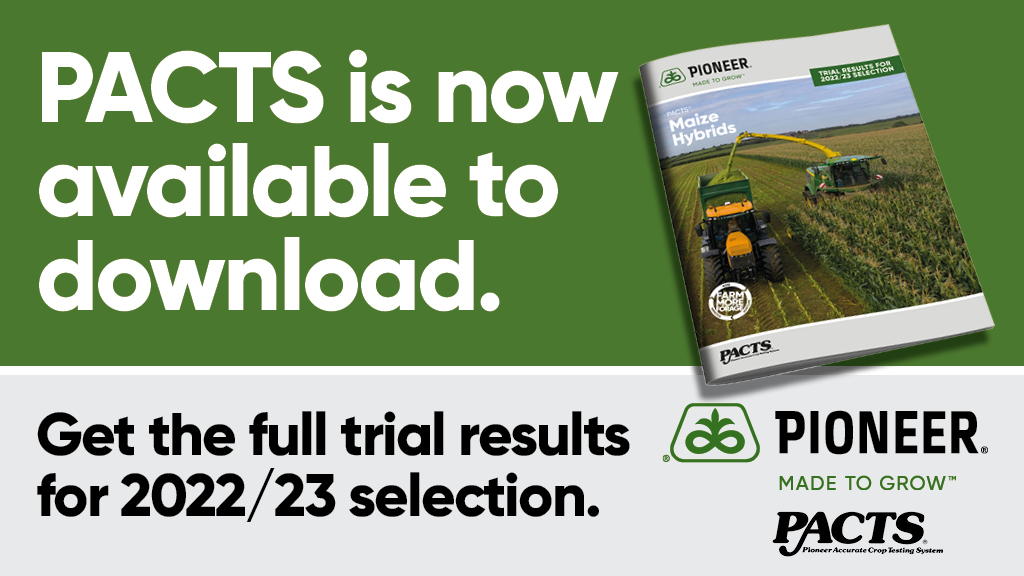
|
|
|
Maize seed treatment registration changes
|
Maize seed treatment Mesurol has already been withdrawn from the market and its main replacement Korit is expected to follow suit in the not-too-distant future. Pioneer has been developing a suitable alternative maize seed treatment to protect crops during establishment, and newly registered treatment Takla was included in this year’s PACTS® trials. So far, results are encouraging. Takla has been compared directly to seed treated with Korit, with yields and plant establishment rates in both treatments being broadly comparable.
|
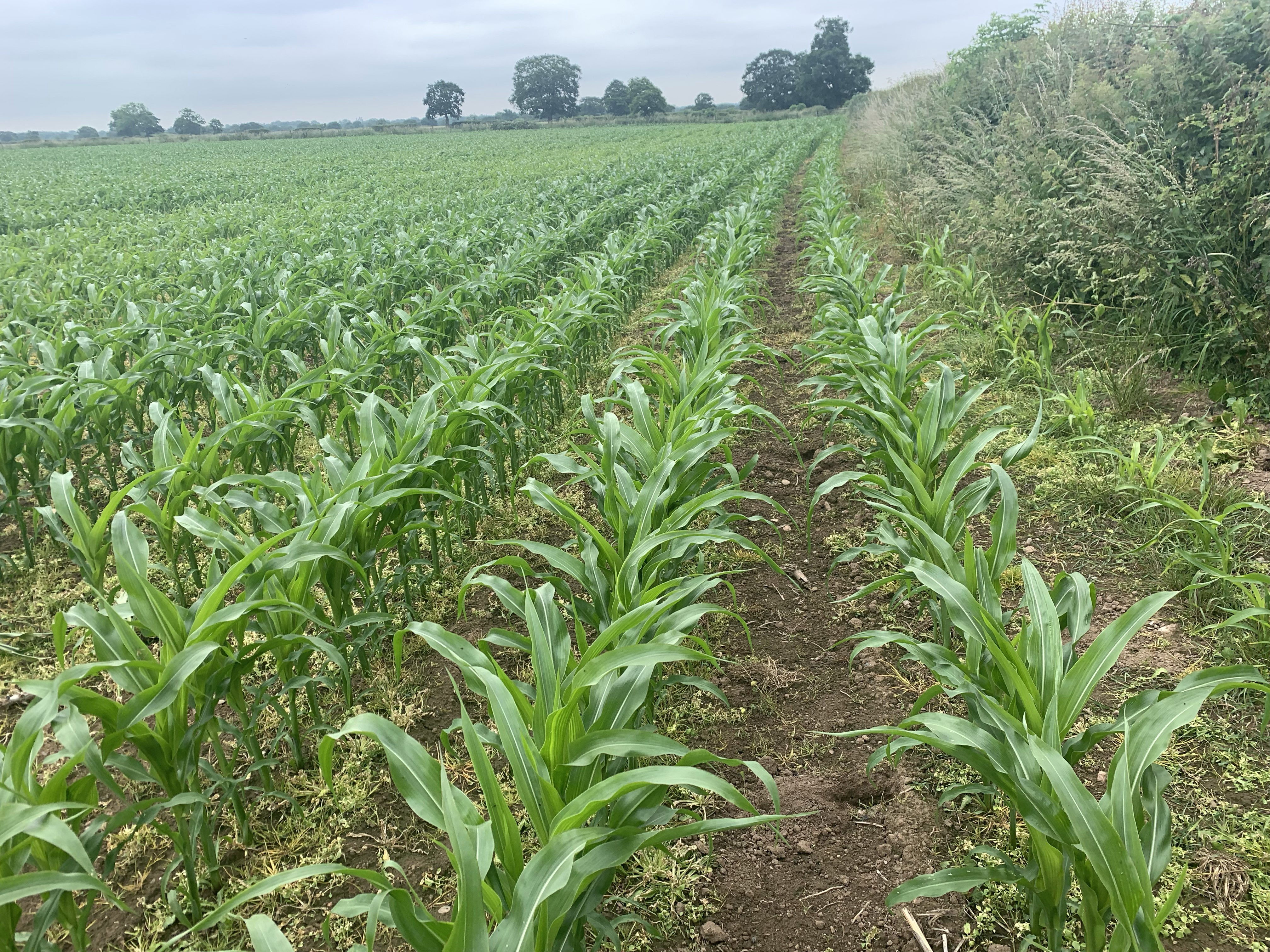
|
|
|
|
|
|
|
The ideal time to spray docks is when the plants are actively growing with fresh leaves. They are a more vibrant green and less waxy. The dock rosette should be 15-20cm in diameter (dinner plate size).
Pre-flowering, the plant is working to consume energy to build vegetative growth. This means that when it is sprayed with a herbicide which has good translocation properties (moves through the plant's vascular system) it takes the chemical right down to its roots killing the plant. Such a product is Doxstar® Pro. Spraying docks 2 to 3 weeks after grass is cut for silage, hay or haylage early is a great time to apply Doxstar Pro as dock plants show fresh leaf growth and are at the same stage of growth ensuring a more complete and even kill.
Apply Doxstar Pro at 2 litres/ha in 300 litres of water. If low drift nozzles are being used, water volumes can be dropped down to 200 litres.
To find out more about how to control docks successfully, watch our new video here.
|
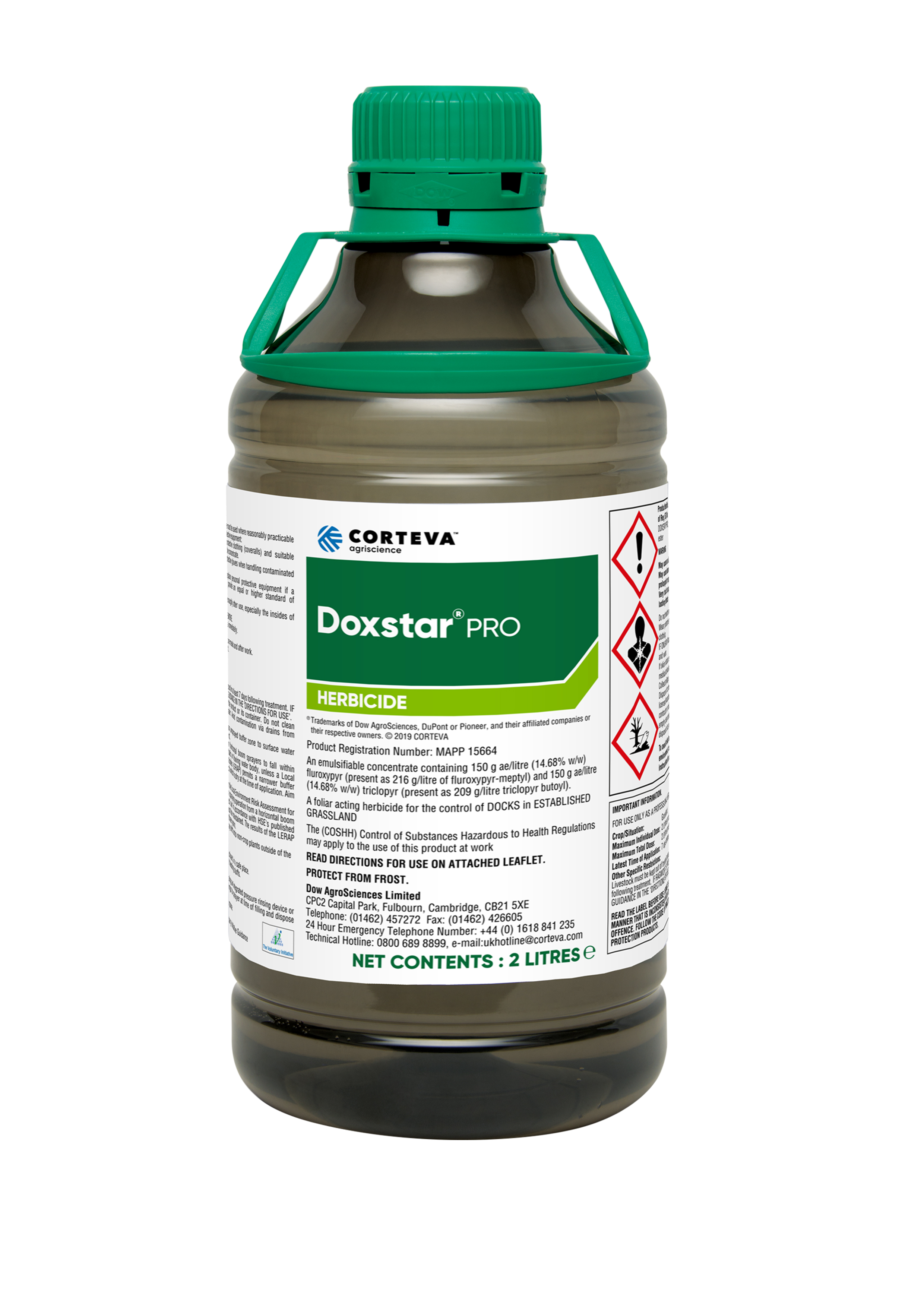
|
|
|
|
|
Chickweed emerges in autumn and if the weather stays warm and wet, it will thrive. A lot of chickweed in the UK has successfully overwintered this year. Chickweed presence is being seen on many farms. It’s important to tackle chickweed because it smothers and out competes with grass. In cutting leys, its high moisture content makes it difficult to wilt and stifles fermentation, decreasing silage quality.
After flowering it dies back and will leave bare patches in fields allowing other weeds, notably docks to colonise the open soil. Where chickweed appears in a reseed, tackle it early before it becomes a more significant problem and damages the new ley’s performance and productivity.
|
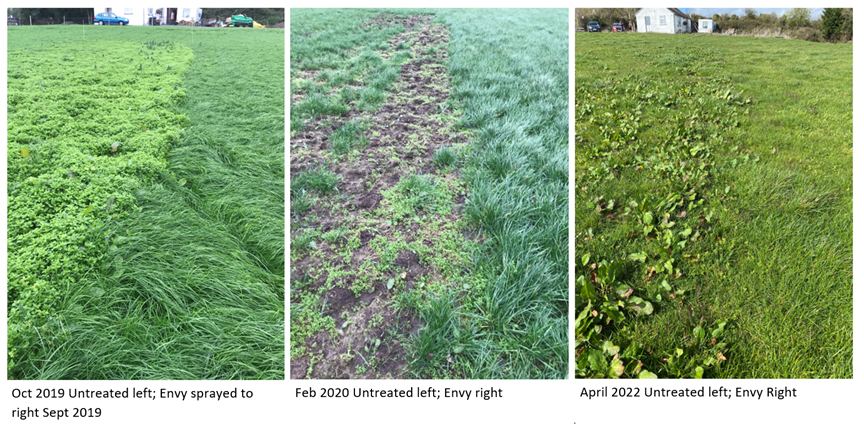
|
Envy® is a selective herbicide ideal for use on new sown leys six to eight weeks after reseeding. It can be used to control both common and mouse-ear chickweed and has good grass safety. It is also effective on buttercup species. It comes in a 3-litre pack and can be applied any time between 1st February and 30th November. Use Envy at 1.5 L/ha in new sown leys, increasing this to 2 L/ha in established grassland.
Envy isn’t safe to clover, so where there is a heavy population of chickweed, spray now and stitch in clover in three months’ time.
|
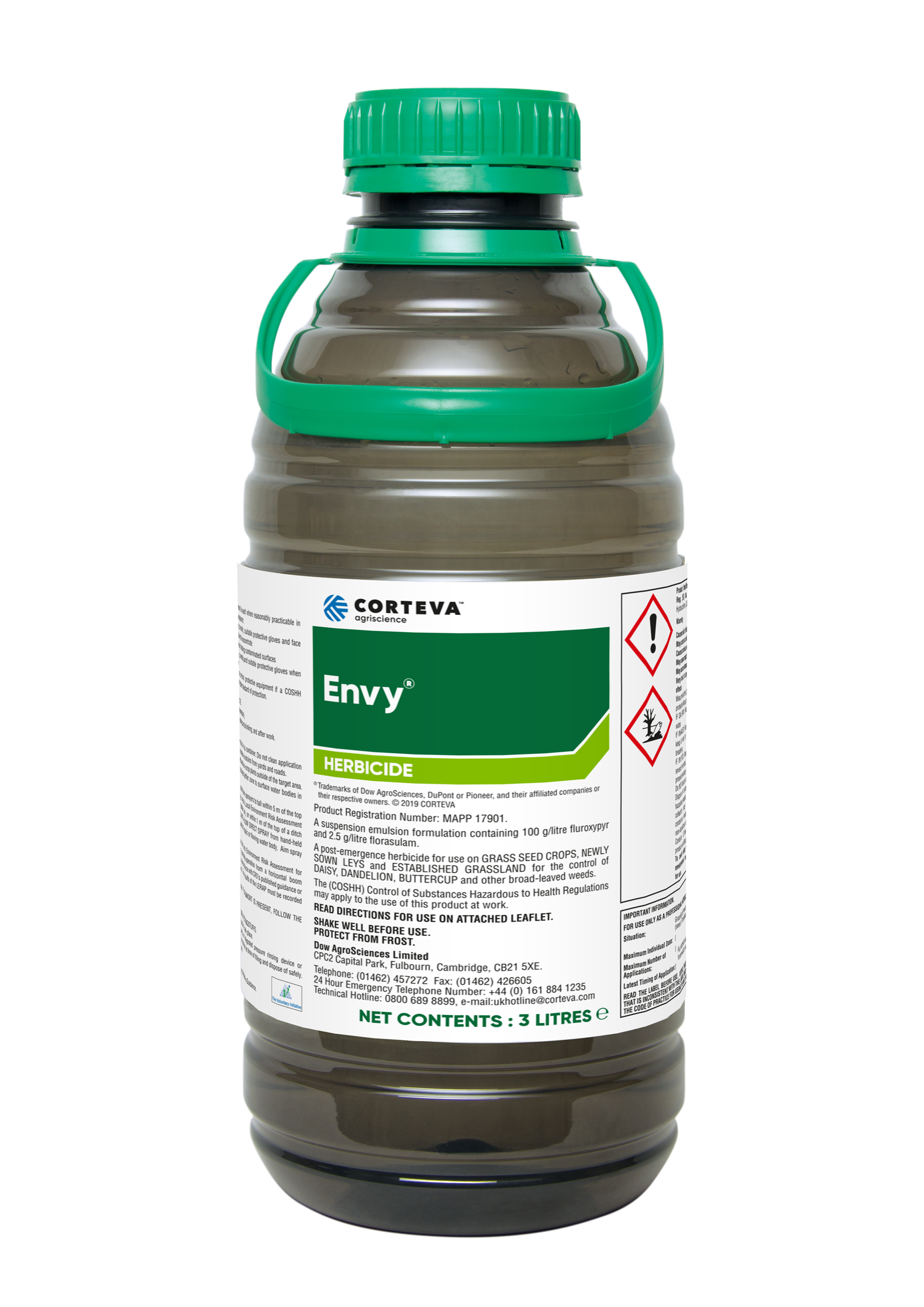
|
|
|
|
|
Use our handy ‘go-to’ guide for all you need to know when common problem weeds appear in your grassland.
|
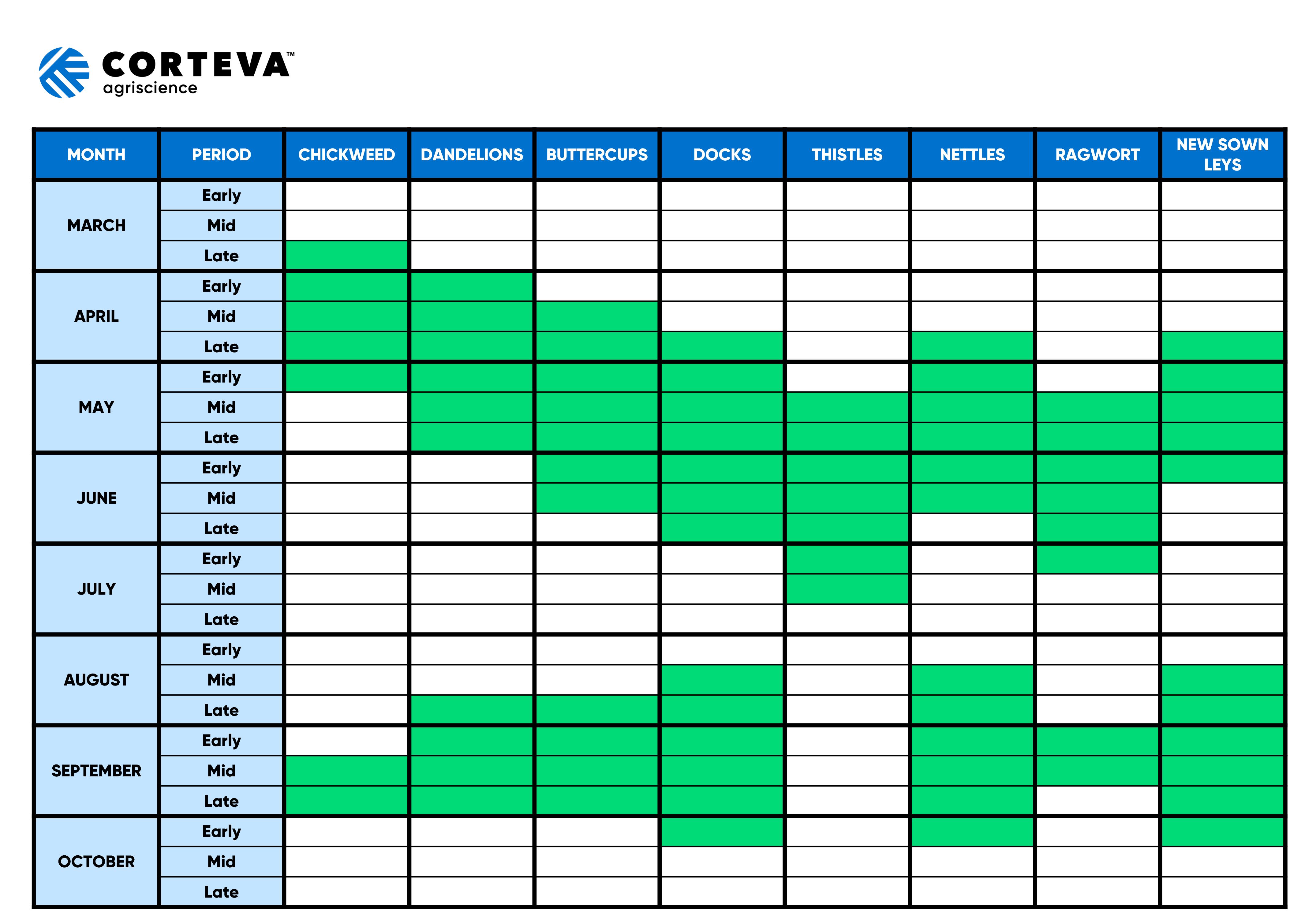
|
|
|
Thistles and new sown leys & maize
|
Leystar has an approval for use in new sown leys, established grassland, grass seed crops, forage maize, cereals, and cereals undersown with grass, Leystar® then is a versatile product for the livestock / mixed farmer.
With three actives delivering effective translocation and a wide spectrum of weed control, use it to control seedling buttercups, seedling docks, seedling thistles, charlock, chickweed, dandelions, knotgrass, bindweed.
Leystar can be applied at 1.0 L/ha and comes in a 2.0 litre pack
|
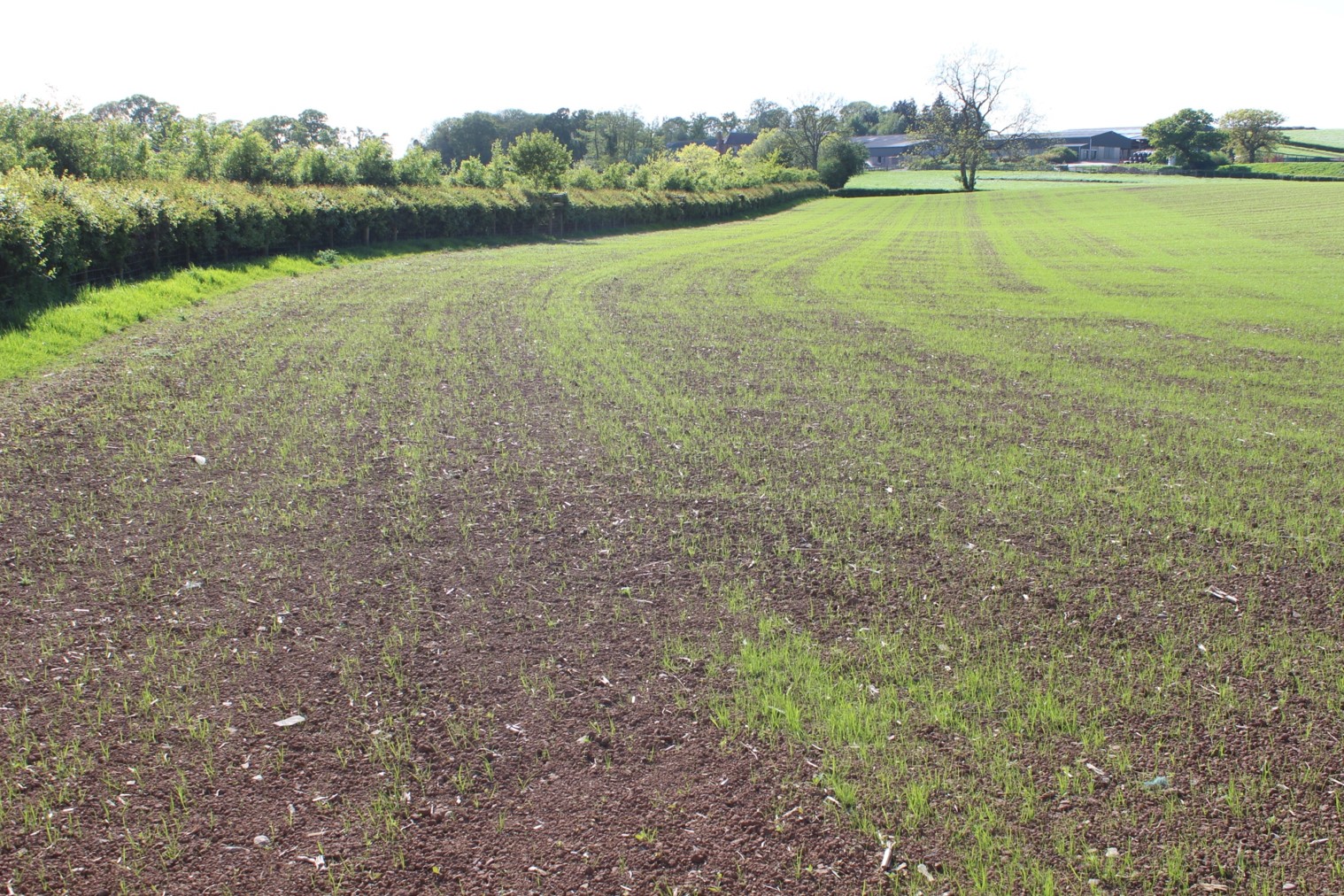
|
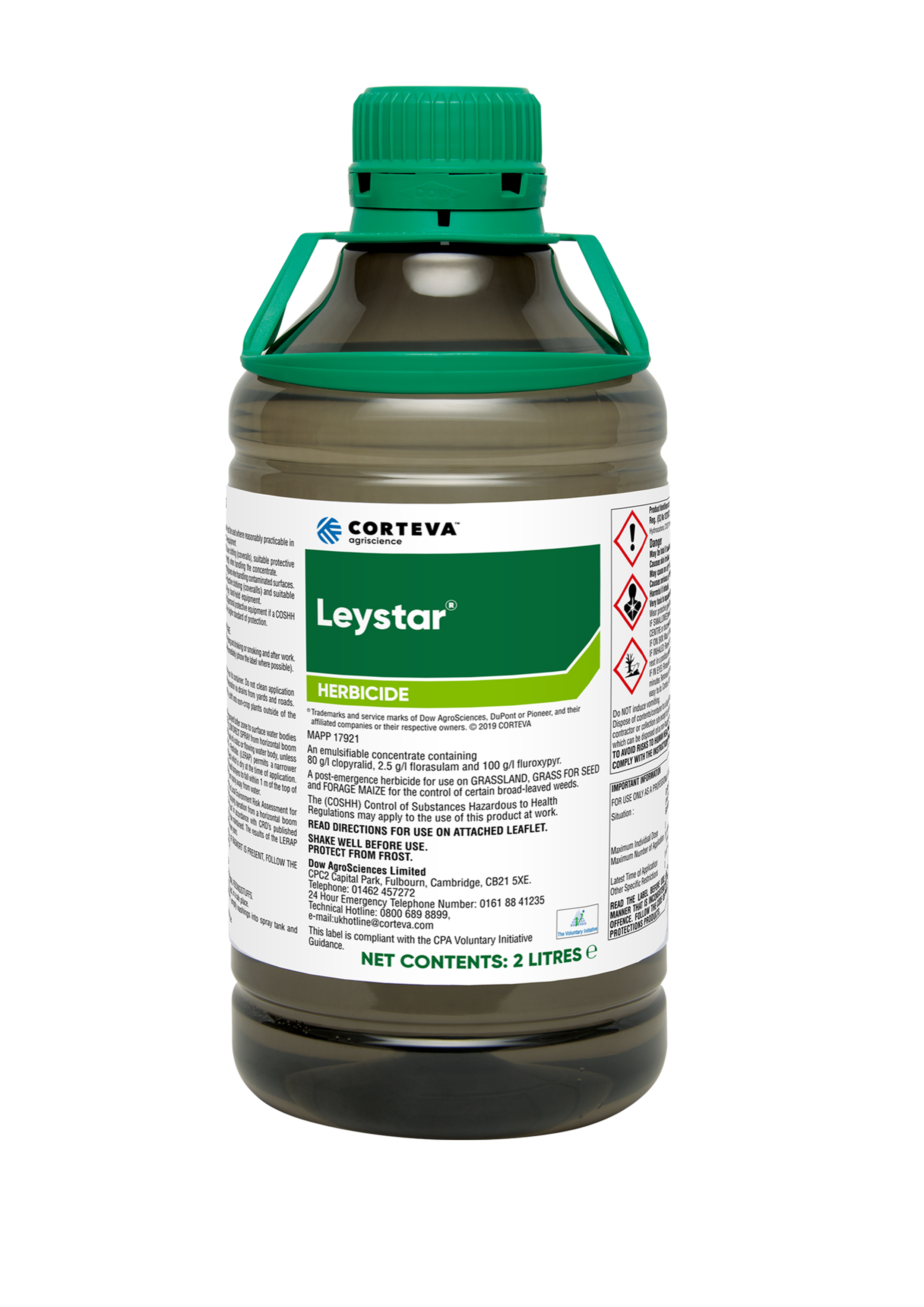
|
|
|
|
|
Nitrogen stabiliser - a great option for maize
|
The use of nitrogen stabilisers in the UK is growing, but still reasonably limited. This year’s high fertiliser prices and pressure on availability is bringing their use to the fore however, and there really isn’t a better time to add them to your fertiliser programme.
Nitrogen stabilisers slow down the conversion of ammonium to nitrate, preventing nitrogen loss through leaching and denitrification. This keeps more nitrogen in the rooting zone for longer, resulting in greater yield potential. Put simply, they increase and extend nitrogen availability.
Trials using Instinct®, a nitrogen stabiliser marketed by Corteva, have shown a reduction in leaching of around 50%, and a reduction in denitrification through greenhouse gases of approximately 45%. Nitrogen is kept in the soil for longer, and for a maize crop, this has a significant impact on yields.
Across Corteva’s trials programme the average yield response is over 10%. However, given current input prices, many growers will be reviewing their nitrogen programme and be looking to use. For growers who traditionally would have used higher rates, Instinct provides the flexibility to do this.
Instinct is usually applied through a crop sprayer, either alone or with herbicides or UAN. Instinct can also be added to slurry spread or digestate and requires a single rate of 1.7 litres/ha. The most important element of use is ensuring good soil contact, so it should be applied before ploughing or when rain is due to achieve good incorporation.
Now is the time to take action to gain the most from your maize this year with reduced inputs.
|
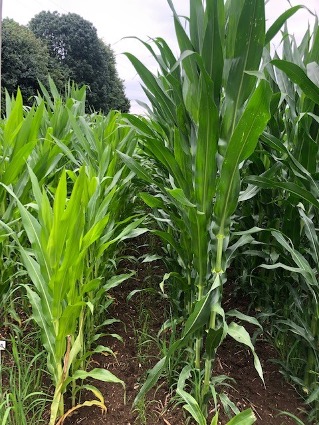
|
|
|
|
|
Q: How can I access the new Forage App?
Q: What are the advantages of a dent-type hybrid such as P7034?
A: A dent-type hybrid such as P7034 produces silage with a very high starch content and yield. It contains a type of starch easier for rumen bacteria to degrade meaning more energy is available to livestock.
Q: When is the best time to treat docks?
A: You can spray docks any time between April and September. Target plants showing active growth and before they flower. If docks are overly large and flowering and or have leaves affected by ramularia or being eaten by dock beetle then top and spray regrowth.
Q: Do I have to wait 12 months from seeding before I can treat a new sown grass ley with herbicide?
A: Many grassland herbicide products specify grass should be over a year old before it is treated, but Envy® can be used earlier. Envy® is a selective herbicide safe to use on new sown leys from as early as the three-leaf growth stage, six to eight weeks after reseeding. It can be applied any time between 1st February and 30th November at 1-1.5 litres/ha.
Q: What is the application rate for Instinct® and how do I apply it?
A: Instinct® is simple to use, requiring a single rate of 1.7l/ha. It is usually applied through a crop sprayer, either alone or with herbicides or UAN, but can also be added to slurry spread or digestate. Ensuring good soil contact is essential, so it should be applied before ploughing or when rain is due.
|
|
|
Your local Corteva Agriscience Forage Experts:
|

|
Our local area managers and forage specialists based throughout the UK are here to help with technical and product enquiries. This month we learn more about our team member in the South:
The first half of Chris Woodget’s life was spent surrounded by dairy cows. He grew up on a dairy farm in Dorset and gained a City & Guilds and ANC in Dairy Farm Management before managing several dairy herds. Chris then moved to the other end of the supply chain and into food production for 10 years but was never far from farming, helping his brother show cattle.
With forage always holding a particular interest for him, Chris’ return to agriculture came in the form of a forage specialist role with Mole Valley. He also spent time as a technical specialist with ForFarmers before joining Corteva last year, working on maize, oilseed rape and inoculants.
“Producing the highest quality forage for livestock has always been a priority for me, so joining Corteva with the very best maize and OSR seed was a good move. I’m also really interested in running the PACTS trial sites and look forward to seeing how our new varieties continue to develop.”
|
|
|
|
Use plant protection products safely. Always read the label and product information before use. For further information including warning phrases and symbols refer to label.
®™ Trademarks Corteva Agriscience Limited and its affiliated companies. All other brand names are trademarks of other manufacturers for which proprietary rights may exist.
Envy® contains fluroxypyr and florasulam. Leystar® contains fluroxypyr, clopyralid and florasulam. Doxstar® Pro contains fluroxypyr and triclopyr. Instinct® contains nitrapyrin.
|

|
|
|
|
|